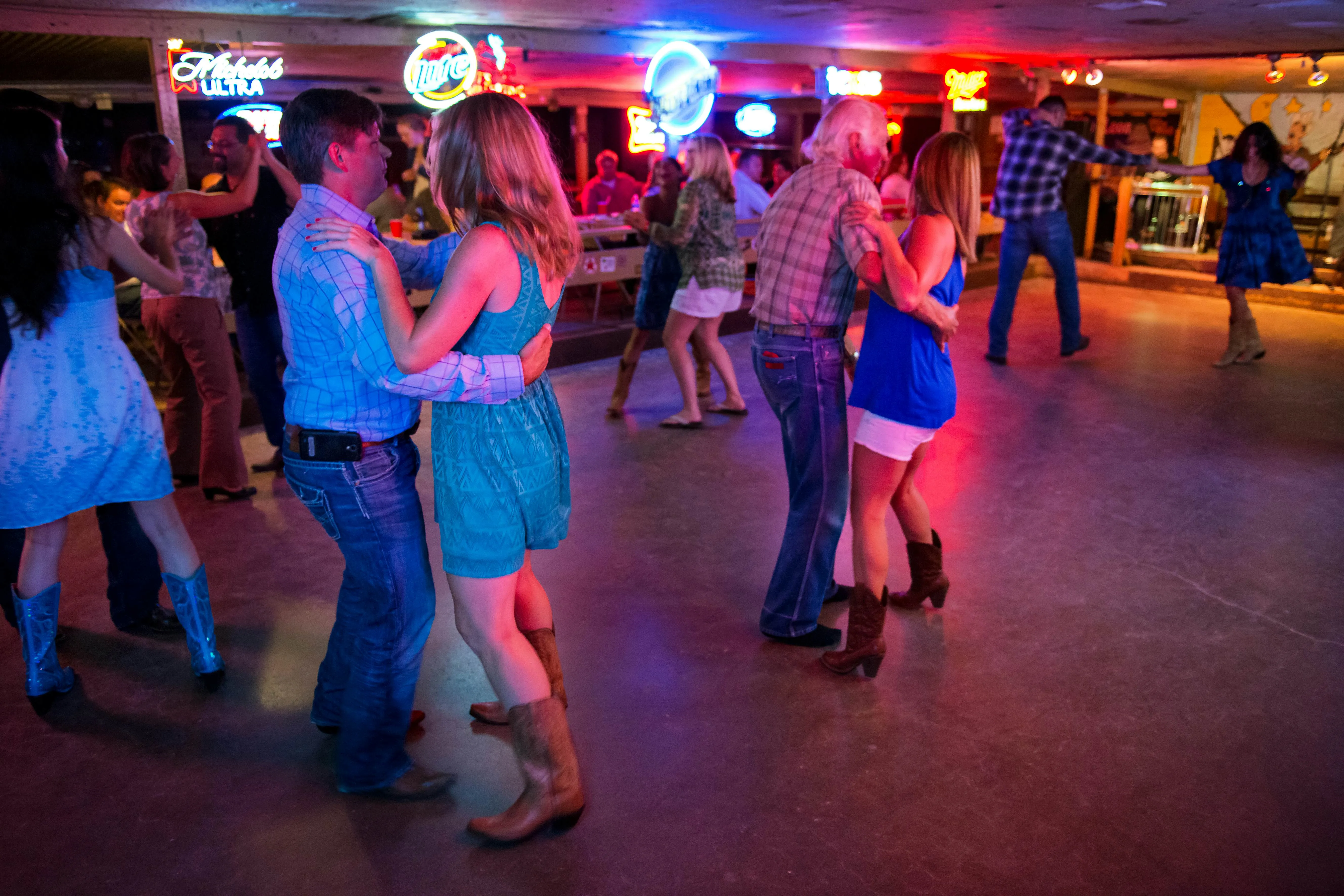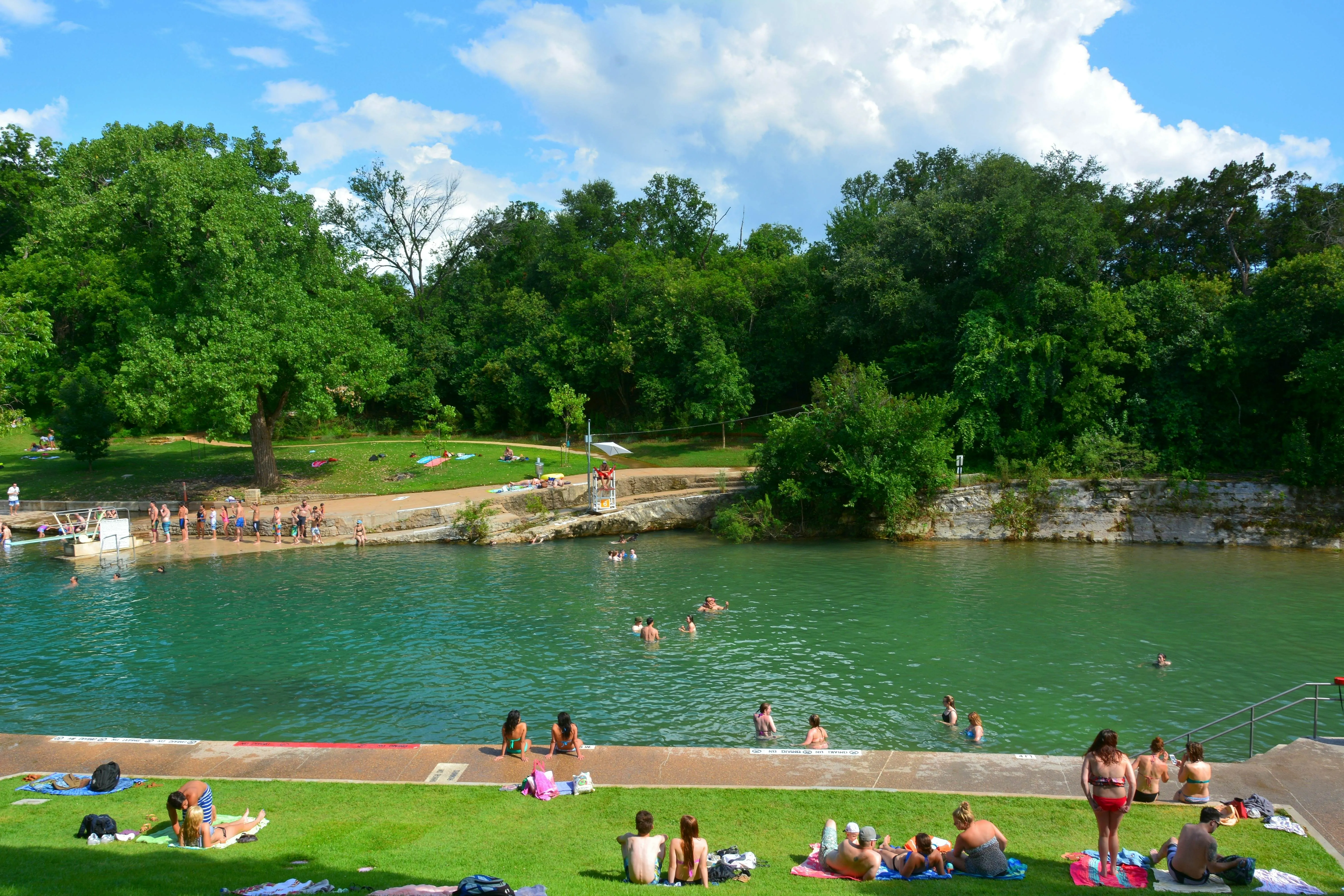Austin, Texas, is a city unlike any other. Famed for its vibrant live music scene, fiercely independent spirit embodied in the “Keep Austin Weird” motto, and an exploding culinary landscape, it’s a destination that truly captures the heart. But when is the absolute best time to visit Austin to fully experience its magic?
As a traveler who delights in the intersection of culture, food, and local life, I can tell you that while Austin is captivating year-round, understanding its seasons unlocks specific, unforgettable experiences. Whether you’re chasing festivals, seeking outdoor adventures, or simply want to savor the city’s unique atmosphere without the peak crowds, timing your visit is key. Let’s dive into what each season offers in this dynamic Texan capital. If you’re planning a broader trip through the Lone Star State, factoring Austin into your texas vacation spots itinerary based on the season can elevate the entire journey.
Understanding Austin’s Seasons & Weather Patterns
Austin’s climate is generally characterized by hot summers, mild winters, and pleasant shoulder seasons in spring and fall. This variability means the weather significantly impacts what’s enjoyable and how crowded popular spots might be. Knowing what to expect temperature-wise helps you pack and plan activities, ensuring comfort is part of your Austin adventure.
The city sits on the edge of the Texas Hill Country, influencing its weather and offering beautiful natural escapes just a short drive away. Humidity can be a factor, especially in the warmer months, so dressing in layers and staying hydrated are always good ideas. Rain is possible year-round but tends to be more frequent in late spring and fall.
Winter: Deals, Cozy Vibes & Holiday Cheer (December – February)
Often overlooked by those dreaming of sun, Austin’s winter months offer a genuinely local and relaxed experience. While the rest of the country might be battling snow and ice, Austin enjoys relatively mild temperatures, typically ranging from the low 40s°F (around 5-7°C) to the low 60s°F (around 15-18°C). It’s not exactly swimsuit weather, but it’s perfect for exploring the city comfortably.
Weather & Crowds
This is arguably the best time to visit Austin if you dislike crowds. Tourism dips significantly after the holiday rush, making it easier to get into popular restaurants, enjoy music venues without being packed shoulder-to-shoulder, and find great deals on accommodations. While “cold” is relative, a light jacket or sweater is usually sufficient, although occasional colder fronts can drop temperatures further. Rain showers are possible, so an umbrella is a good addition to your packing list.

What to Do
Winter in Austin is perfect for indoor activities and experiencing the city’s famous laid-back culture.
- Live Music: Dive into the heart of the “Live Music Capital of the World” by exploring smaller clubs and historic venues. The cooler weather makes a night hopping between bars on Rainey Street or catching a show on Sixth Street incredibly enjoyable.
- Holiday Events (December): The beginning of winter is festive with events like the Austin Trail of Lights in Zilker Park, Christmas bazaars, caroling, and ice skating.
- Museums and Galleries: Spend time exploring the city’s diverse museums, from the Blanton Museum of Art to the Bullock Texas State History Museum.
- Culinary Exploration: Winter is ideal for savoring Austin’s rich food scene, particularly its famous BBQ joints where the warmth from the smokers is a welcome treat. It’s also a great time to cozy up in a cafe with a hot drink.
Finding Deals
If budget is a primary concern, winter (outside of the Christmas/New Year’s week) offers the best chance for discounted hotel rates. Flights can also be cheaper during this period. This makes it a great time for travelers looking to experience Austin without breaking the bank.
 People dancing at the Broken Spoke honky-tonk in Austin, Texas during winter
People dancing at the Broken Spoke honky-tonk in Austin, Texas during winter
Spring: Festivals, Wildflowers & Ideal Weather (March – May)
Spring in Austin is, in a word, glorious. The weather is nearly perfect, the city bursts into bloom, and the festival calendar kicks into high gear. This is arguably the most popular and exciting time to visit, but be prepared for crowds and higher prices.
Weather & Beauty
Temperatures are pleasantly warm, typically ranging from the 60s°F to the low 80s°F (around 15-28°C). Humidity is lower than in summer, and sunny days are abundant. Late spring can start to feel quite warm, nearing summer temperatures, but it’s generally very comfortable for outdoor activities. The highlight is the natural beauty: wildflowers carpet the landscape, most notably the iconic Texas bluebonnets, which usually peak from mid-March through mid-April.
Iconic Events
Spring is synonymous with festivals in Austin:
- SXSW (South by Southwest) (March): This massive convergence of film, interactive media, and music is world-renowned. It draws huge crowds and completely transforms the city. If you’re attending, plan months in advance. If you’re not, be aware that prices skyrocket and downtown is exceptionally busy.
- Austin Urban Music Festival (April): Celebrates R&B, gospel, soul, and hip-hop music.
- NASCAR at Circuit of the Americas (March/April): Brings racing excitement to the area.
- Eeyore’s Birthday Party (April): A uniquely Austin, counter-cultural festival in Pease Park.
 Anderson Paak performs at SXSW festival in Austin, Texas
Anderson Paak performs at SXSW festival in Austin, Texas
Nature’s Display
Beyond the city limits, spring is the best time to visit Austin for exploring the Texas Hill Country and witnessing the famous wildflower blooms. Take a scenic drive to areas like Burnet, Fredericksburg, or Ennis (the official Texas Bluebonnet Trail) for breathtaking views. Closer to town, the Lady Bird Johnson Wildflower Center showcases native Texas plants in stunning displays, often hosting special events during wildflower season in April and May.
Springtime Experiences
Spring is perfect for enjoying Austin’s numerous parks and outdoor spaces. Hiking, biking, kayaking on Lady Bird Lake, and exploring outdoor patios at restaurants and bars are all popular activities.
Summer: Heat, Swims & Bats (June – August)
Summer in Austin is hot. Let’s not sugarcoat it – average high temperatures hover around 95°F (35°C) or even higher, often combined with significant humidity. However, if you can handle the heat, summer offers some quintessential Austin experiences centered around water and unique natural phenomena.
The Heat is On
If you choose to visit in summer, prepare for intense heat, especially in July and August. Mornings and evenings are more comfortable for outdoor activities, but afternoons are best spent indoors or near water. This is not the ideal time for extensive walking tours or strenuous hiking during the day.
Beating the Heat
Fortunately, Austin knows how to cool down.
- Barton Springs Pool: This iconic natural spring-fed pool in Zilker Park maintains a refreshing temperature of around 68°F (20°C) year-round. It’s a favorite local spot to escape the heat and feels like a true oasis. Arrive early, especially on weekends, as it gets crowded.
- Greenbelt & Swimming Holes: Explore the Barton Creek Greenbelt, which offers access to various swimming holes (condition depends on recent rainfall) like Twin Falls and Sculpture Falls.
- Kayaking, Paddleboarding, and Boating: Lady Bird Lake is a hub for water activities. Rent a kayak or paddleboard and cool off on the water.
 Swimmers enjoying Barton Springs Pool in Austin, Texas on a hot summer day
Swimmers enjoying Barton Springs Pool in Austin, Texas on a hot summer day
The Famous Bat Show
One of Austin’s most unique summer spectacles is the emergence of the Mexican free-tailed bat colony from under the Congress Avenue Bridge. From late spring through early fall, but peaking in July and August, over 1.5 million bats stream out at dusk in a mesmerizing display as they head out to feed. The best time to visit Austin to see the bats is during these peak months. Viewing points include the bridge itself, the grassy lawn on the southeast side, or from a boat tour on Lady Bird Lake.
Summer Events
Summer brings its own set of celebrations:
- Fourth of July Fireworks: A spectacular display over Lady Bird Lake.
- Austin Pride (August): A vibrant celebration of the LGBTQ+ community.
- Bat Fest (August): A quirky festival held on the bridge celebrating the bats with music, food, and vendors.
While summer is high season for families due to school holidays, the intense heat can deter some visitors, making it less crowded than spring or fall festival weekends, but certainly busier than winter.
Fall: More Festivals & Pleasant Weather (September – November)
Fall is another strong contender for the best time to visit Austin. The scorching summer heat begins to dissipate, and the city comes alive with cultural events.
Post-Summer Relief
Temperatures start high in September (still in the 80s and 90s°F) but gradually cool down through October and November to comfortable levels in the 70s and 60s°F (around 20-25°C declining). Humidity decreases, making outdoor activities enjoyable again. While Austin isn’t known for dramatic fall foliage like other parts of the country, some parks offer beautiful color changes.
Fall Festivals
Like spring, fall is prime festival season:
- Austin City Limits Music Festival (October): A massive, multi-weekend music festival in Zilker Park featuring world-class artists. Similar to SXSW, it draws huge crowds and impacts accommodation prices and availability.
- Austin Film Festival (October): Celebrates writers and filmmakers.
- Formula 1 US Grand Prix (October/November): Draws international crowds to the Circuit of the Americas.
- Texas Book Festival (November): A major literary event.
Enjoying the Outdoors
As the temperatures become more pleasant, exploring the outdoors becomes a joy. Hiking and biking trails, exploring parks, and simply walking around different neighborhoods are excellent ways to experience the city.
Austin Any Time: Music, Food, and Culture
Beyond the seasonal highlights, Austin offers core experiences that define its identity and are available year-round. The best time to visit Austin might simply be any time you can immerse yourself in these fundamental elements.
The Live Music Capital
This isn’t just a slogan; it’s a way of life. From the historic stages of the Continental Club and Saxon Pub to the honky-tonks, dive bars, and major concert venues, music is the heartbeat of Austin. Explore different genres, catch spontaneous gigs, and understand why music is so deeply woven into the city’s fabric.
A Culinary Haven
Austin’s food scene is incredibly diverse and innovative. While Texas BBQ is legendary (frankly, essential – don’t miss the best bbq in austin spots), the city offers so much more. Explore vibrant food truck parks, savor authentic Tex-Mex and regional Mexican cuisine, indulge in fine dining, or seek out specific cravings like the best sushi in austin. The food here tells the story of Texas’s diverse cultural influences. From breakfast tacos to upscale farm-to-table, your taste buds will thank you regardless of the season.
Arts & Culture
Beyond music, Austin boasts a thriving arts scene with numerous galleries, street art, and performance venues. The “Keep Austin Weird” mantra isn’t just about quirkiness; it’s about supporting local businesses, artists, and independent thinkers. Explore neighborhoods like South Congress for unique shops and galleries, or visit the Umlauf Sculpture Garden.
The “Keep Austin Weird” Vibe
This philosophy encourages creativity, individuality, and supporting local culture. You see it in the unique shops, the eclectic street performers, the various festivals, and the city’s generally relaxed and inclusive atmosphere. Embracing this vibe is key to understanding Austin.
Planning Your Austin Trip
Deciding the best time to visit Austin truly depends on your priorities.
- Consider the Crowds: Spring (especially SXSW) and Fall (ACL, F1) are peak festival times with maximum crowds and prices. Summer is busy with families but the heat can thin crowds for non-water activities. Winter is the least crowded.
- Budgeting by Season: Expect higher accommodation and flight costs during major festivals and events (Spring/Fall). Winter typically offers the best value.
- Getting Around: Austin is spread out, so plan for transportation. Ride-sharing, taxis, and car rentals are options. The downtown area is walkable, and some neighborhoods are bike-friendly.
- Day Trips from Austin: Austin is a great base for exploring the surrounding Hill Country. Charming towns, wineries, breweries, and natural swimming spots are all within easy reach.
Whether you’re drawn by the allure of live music, the promise of incredible food, the vibrant culture, or the chance to connect with nature, Austin has something to offer whenever you arrive. It’s a city that invites you to explore, to taste, and to truly live its unique spirit. While Austin is certainly worth visiting, exploring other parts of Texas is also highly recommended, perhaps starting with some classic road trips from dallas. For those with a wider Texas exploration in mind, planning can include diverse experiences, from exploring vibrant cities to even looking into options like an overnight camp houston for a different kind of adventure, highlighting just how much variety the state offers.
Frequently Asked Questions About Visiting Austin
What is the cheapest time to visit Austin?
The winter months (December to February), excluding the holiday weeks around Christmas and New Year’s, are typically the cheapest time to visit Austin due to lower demand. You’re more likely to find deals on hotels and flights during this period.
What is the hottest month in Austin?
July and August are generally the hottest months in Austin, with average high temperatures often reaching 95°F (35°C) or higher and significant humidity.
When are the bats under the bridge in Austin?
The Mexican free-tailed bats reside under the Congress Avenue Bridge from approximately March to October. The most spectacular emergences, with the largest numbers of bats, typically occur in July and August.
When is SXSW in Austin?
South by Southwest (SXSW) usually takes place in mid-March each year, spanning about 10 days.
When are the wildflowers blooming in the Austin area?
Wildflowers, including the famous Texas bluebonnets, typically bloom in the Hill Country surrounding Austin from mid-March through mid-April, although the exact timing varies slightly year to year based on rainfall and temperature.
Conclusion
So, what is the definitive best time to visit Austin? If you crave pleasant weather, iconic festivals, and stunning natural beauty, spring or fall are your seasons. For budget travelers and those seeking a more relaxed, local vibe without intense heat or massive crowds, winter is surprisingly appealing. And if you want to experience the famous bats and cool off in natural swimming holes, summer is the time to go, provided you can handle the heat. Ultimately, Austin’s charm lies in its year-round energy and diverse offerings. By considering your priorities – whether it’s the weather, specific events, budget, or crowd levels – you can choose the time that makes your Austin adventure the most memorable.
